My overall approach is “problem-aimed, solution-focused”: from synthesizing perspectives and outcomes in the scientific literature to reveal gaps and opportunities for future exploration; to crafting protocols and experiments that yield fresh looks on competing theories; to applying statistical techniques from one domain to data collected from another; to building software and interfaces that help researchers and end users sift through big-deal data to discover answers to questions they didn’t know they could ask. Extensive training in psychology, physiology, statistics, clinical neuroscience, computer science, and behavioral design lets me take a “Swiss army knife” approach to untangling complex ideas — translating them into straight-shooting insights in a way that’s persuasive, passionate, and personal.
Product rating systems from a scale of 1 to k (with k = 5 being most common) are ubiquitous, from Airbnb to Zappos. Typically, ratings are summarized using two statistics: (1) the arithmetic mean, and (2) the number of ratings which comprise it. Consider the ratings summaries of these three products:
For details, see https://robjellis.net/starpower.html.
- Product A: 10 ratings, mean rating = 4.4
- Product B: 100 ratings, mean rating = 4.2
- Product C: 1000 ratings, mean rating = 4.0
For details, see https://robjellis.net/starpower.html.
2. iRACE: A validated smartphone app for gait analysis in Parkinson’s disease.
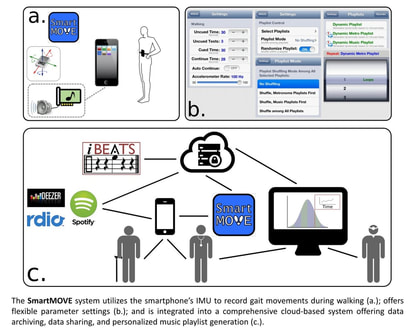
There is a well-established connection between increased gait variability and greater fall likelihood in Parkinson’s disease (PD). However, a portable, validated means of quantifying gait variability remains lacking. Furthermore, although rhythmic auditory cueing continues to receive attention as a promising gait therapy for PD, its widespread delivery remains bottlenecked.
This project (a collaboration between the Sound and Music Computing Lab and Singapore General Hospital) aimed to address both needs using a smartphone-based mobile application: SmartMOVE. SmartMOVE measures spatiotemporal gait dynamics and detect gaits instability without the need for external sensors, with an eye towards providing a portable, accurate, and cost-efficient tool for clinic-based assessments and home-based monitoring (Ellis et al., 2015). A video overview of the beta version of this app (iRACE) is available here.
This project (a collaboration between the Sound and Music Computing Lab and Singapore General Hospital) aimed to address both needs using a smartphone-based mobile application: SmartMOVE. SmartMOVE measures spatiotemporal gait dynamics and detect gaits instability without the need for external sensors, with an eye towards providing a portable, accurate, and cost-efficient tool for clinic-based assessments and home-based monitoring (Ellis et al., 2015). A video overview of the beta version of this app (iRACE) is available here.
3. iBEATS: Temporally stable music for exercise and rehabilitation.
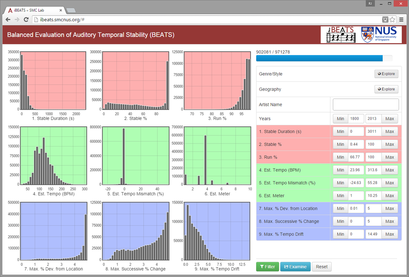
A set of statistics—and a web interface to visualize them—designed to more thoroughly explore temporal stability in commercially recorded music (Ellis et al., 2014). In a sample of nearly 1M songs (the Million Song Dataset), only 20% of songs actually maintained a steady beat from beginning to end.
Tempo stability is an important consideration when designing music playlists around a particular tempo or progression of tempos: for example, rehabilitation (e.g., rhythmic gait training), exercise (e.g., jogging), or entertainment (e.g., continuous dance mixes). Take the “iBEATS” search engine (which includes 7digital audio previews) for a spin here.
Tempo stability is an important consideration when designing music playlists around a particular tempo or progression of tempos: for example, rehabilitation (e.g., rhythmic gait training), exercise (e.g., jogging), or entertainment (e.g., continuous dance mixes). Take the “iBEATS” search engine (which includes 7digital audio previews) for a spin here.
4. Lexical novelty in popular song lyrics.
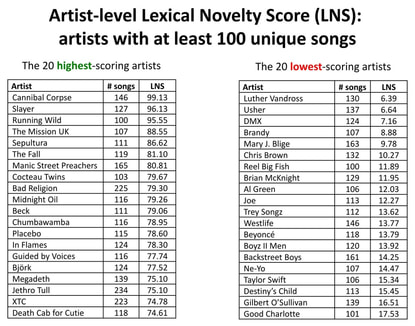
Novelty is an important construct that affects both psychological and behavioral processes. Here, we propose a method to quantify the degree of lexical novelty in a corpus of 275,000 American popular song lyrics, obtained via a partnership with LyricFind and made available (see here or here) to the research community for the first time.
This Lexical Novelty Score, ranging from 0 to 100, indicates how novel the set of words in a given song is, relative to “chance” (Ellis et al., 2015).
Novelty scores for songs and artists in Billboard Magazine's lists of Top Songs and Top Artists were significantly lower than “non-top” songs and artists — a finding consistent with the general hypothesis that moderate novelty is preferred over high novelty across a range of stimuli.
This Lexical Novelty Score, ranging from 0 to 100, indicates how novel the set of words in a given song is, relative to “chance” (Ellis et al., 2015).
Novelty scores for songs and artists in Billboard Magazine's lists of Top Songs and Top Artists were significantly lower than “non-top” songs and artists — a finding consistent with the general hypothesis that moderate novelty is preferred over high novelty across a range of stimuli.
5. Heart rate variability: an index of central-peripheral nervous system integration.
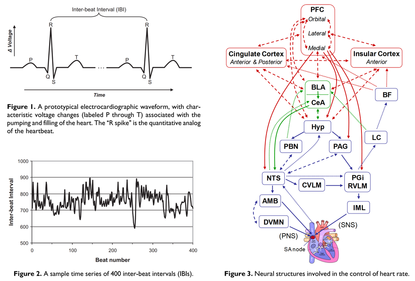
A research line (with Julian Thayer and John Sollers III) that employed analyses of heart rate variability (HRV) to examine behavioral and emotional responses to environmental “challenges,” such as bright light (Ellis et al., 2007) or arousing music (Ellis et al., 2009).
HRV has been linked to physiological health, situationally appropriate emotional responding, and cognitive and attentional flexibility. For some (now older) reviews with particular relevance to music, see Ellis & Thayer, 2010 and Ellis et al., 2012.
HRV has been linked to physiological health, situationally appropriate emotional responding, and cognitive and attentional flexibility. For some (now older) reviews with particular relevance to music, see Ellis & Thayer, 2010 and Ellis et al., 2012.
6. Musical training, development, and brain function.
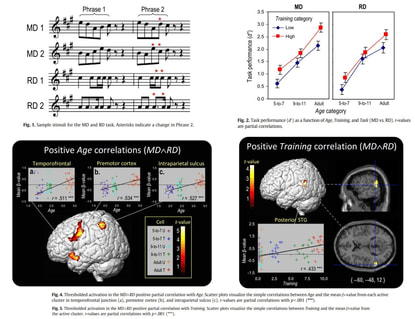
Exploration of a rich corpus of structural and functional imaging and behavioral data of children and adults with and without musical training (a multi-year marathon of data collection by the Music and Neuroimaging Lab).
Separate projects focused on (1) teasing apart the effects of age and musical training on patterns of fMRI activation during a musical discrimination task, using robust regression techniques (Ellis et al., 2012), and (2) illuminating training-mediated functional lateralization of brain activity in a cohort of children followed over several years (Ellis et al., 2013).
Separate projects focused on (1) teasing apart the effects of age and musical training on patterns of fMRI activation during a musical discrimination task, using robust regression techniques (Ellis et al., 2012), and (2) illuminating training-mediated functional lateralization of brain activity in a cohort of children followed over several years (Ellis et al., 2013).
7. Neural mechanisms of rhythmic motor timing in Parkinson’s disease.
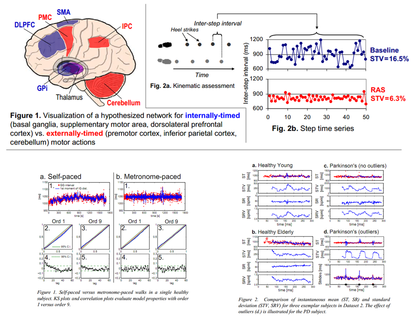
A collaboration between the Music and Neuroimaging Lab and the Parkinson's Disease and Movement Disorders Clinic at BIDMC was established to undertake an in-depth exploration of the neural mechanisms driving the facilitative effect of rhythmic auditory cueing (RAC; e.g., metronome-paced auditory stimuli) on gait in patients with PD.
I also worked with Riccardo Barbieri at Massachusetts General Hospital on a point process model of gait event series, which permits step-to-step analyses of gait variability (Ellis, Citi, & Barbieri, 2011), and received a pilot grant from the Harvard NeuroDiscovery Center to further understand the utility of fMRI techniques to explore rhythmic motor timing in PD.
I also worked with Riccardo Barbieri at Massachusetts General Hospital on a point process model of gait event series, which permits step-to-step analyses of gait variability (Ellis, Citi, & Barbieri, 2011), and received a pilot grant from the Harvard NeuroDiscovery Center to further understand the utility of fMRI techniques to explore rhythmic motor timing in PD.
8. Rhythmic aspects of auditory attention.
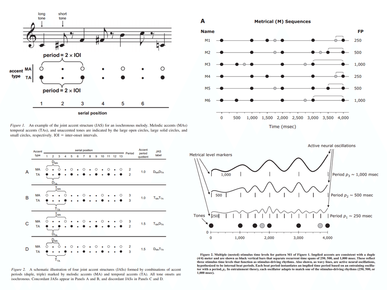
Two projects (with Mari Riess Jones) that utilized a “dynamic attending” approach to challenge common assumptions about how listeners perceive meter (Ellis & Jones, 2009) and make simple, forced-choice decisions (Ellis & Jones, 2010).
9. Visualization and analysis tools for neuroimaging.

The research questions we can answer are only as good as the tools we have available to help ask them — a truism particularly apropos in the complex world of brain imaging. To that end, I have worked on a set of tools to facilitate image visualization and exploratory data analysis.
